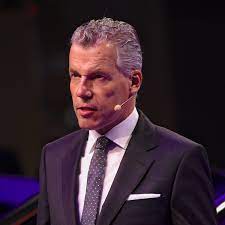Rolls-Royce CEO Torsten Müller-Ötvös Retires: A Legacy of Transformation

In the ever-evolving automotive industry, a key indicator of vitality lies in leadership transitions. For Rolls-Royce, the esteemed British manufacturer known for its engines and luxury automobiles, such transitions hold significant meaning. With a rich history spanning nearly 120 years, the brand has weathered corporate upheavals and economic uncertainties. Under the guidance of Torsten Müller-Ötvös, who served as the CEO of Rolls-Royce Motor Cars since 2010, the marque underwent a remarkable renaissance. It expanded its model range and customer base while preserving its exclusivity. However, the recent announcement of Müller-Ötvös’ retirement marks the end of an era. Stepping into his shoes on December 1st will be Chris Brownridge, the current CEO of BMW UK.
A Sneak Peek into the Departure
Robb Report had the privilege of receiving advanced notice of Müller-Ötvös’ departure. The news came directly from the 63-year-old CEO himself during our test-drive of Spectre, Rolls-Royce’s groundbreaking all-electric model. Our in-depth conversation with him, though, took place during Monterey Car Week, coinciding with the unveiling of La Rose Noire, the latest bespoke coachbuilt masterpiece from Goodwood. This was an opportunity to delve into Müller-Ötvös’ career journey, his tenure as CEO, and how it shaped his perception of luxury.
Embracing the Unexpected
“It’s something you can’t plan for,” Müller-Ötvös reflects when asked about leading such a prestigious brand. His journey with Rolls-Royce began after he joined the BMW Group in 1989. His involvement in branding discussions during BMW’s acquisition of the Rover Group introduced him to British brands. This experience helped him understand the unique, emotional, and carefully curated nature of these brands. When offered the role of leading Rolls-Royce, he didn’t hesitate, recognizing it as the perfect moment.
A Shift Towards Relevance
During Müller-Ötvös’ tenure, Rolls-Royce faced the challenge of staying relevant as its customer demographic was aging. The average Rolls-Royce owner was 56 years old. Seeking solutions, Müller-Ötvös consulted with private banks, gaining valuable insights into the changing landscape of ultra-high-net-worth individuals. Their predictions proved accurate; the elite clientele was becoming younger.
Armed with this information, Müller-Ötvös initiated a corporate transformation. The brand, once predominantly chauffeur-driven, underwent a significant shift. The introduction of the two-door Wraith and the modern Ghost sedan’s second iteration marked the beginning of this transformation. Dawn, a two-door convertible introduced in 2016, attracted a more diverse customer base, including women. The edgy Black Badge trim, initially available on the Wraith, resonated with a new breed of clients.
Redefining Ownership
The creation of the Black Badge concept, inspired by owners’ inclination to give their cars a more aggressive look, successfully appealed to a younger audience. This initiative played a pivotal role in reducing the average age of Rolls-Royce owners to 43, even surpassing that of Mini. The revamped Ghost, named the Robb Report Luxury Car of the Year in 2021, catered to this younger demographic. Meanwhile, Müller-Ötvös ensured that the older clientele wasn’t overlooked, launching the eighth generation of the flagship Phantom and reviving coachbuilt projects like the Boat Tail, each valued at eight figures.
Pioneering Innovation
Müller-Ötvös’ impact on Rolls-Royce extends to innovation. He introduced an SUV, referred to as a high-sided vehicle in Rolls-Royce’s distinctive lexicon. Furthermore, he led the brand into the era of electrification with Spectre, a move met with initial skepticism but refined through continuous dialogue with the client base.
Fond Farewells and Future Endeavors
As Müller-Ötvös prepares to pass the baton to Chris Brownridge and dedicate more time to his passions like fly-fishing and boating, his commitment to the automotive world remains unwavering. He will continue to offer his insights through consulting and non-executive roles, although the specific details are yet to be finalized. When asked about regrets, Müller-Ötvös responds with certainty, “None. Seriously. Looking in hindsight, I would not change anything.”
In conclusion, Torsten Müller-Ötvös leaves behind a transformative legacy at Rolls-Royce, characterized by a shift in demographics, innovation, and a relentless commitment to preserving the brand’s heritage while embracing the future. As the automotive world bids farewell to this visionary leader, it eagerly anticipates the next chapter under Chris Brownridge’s leadership





